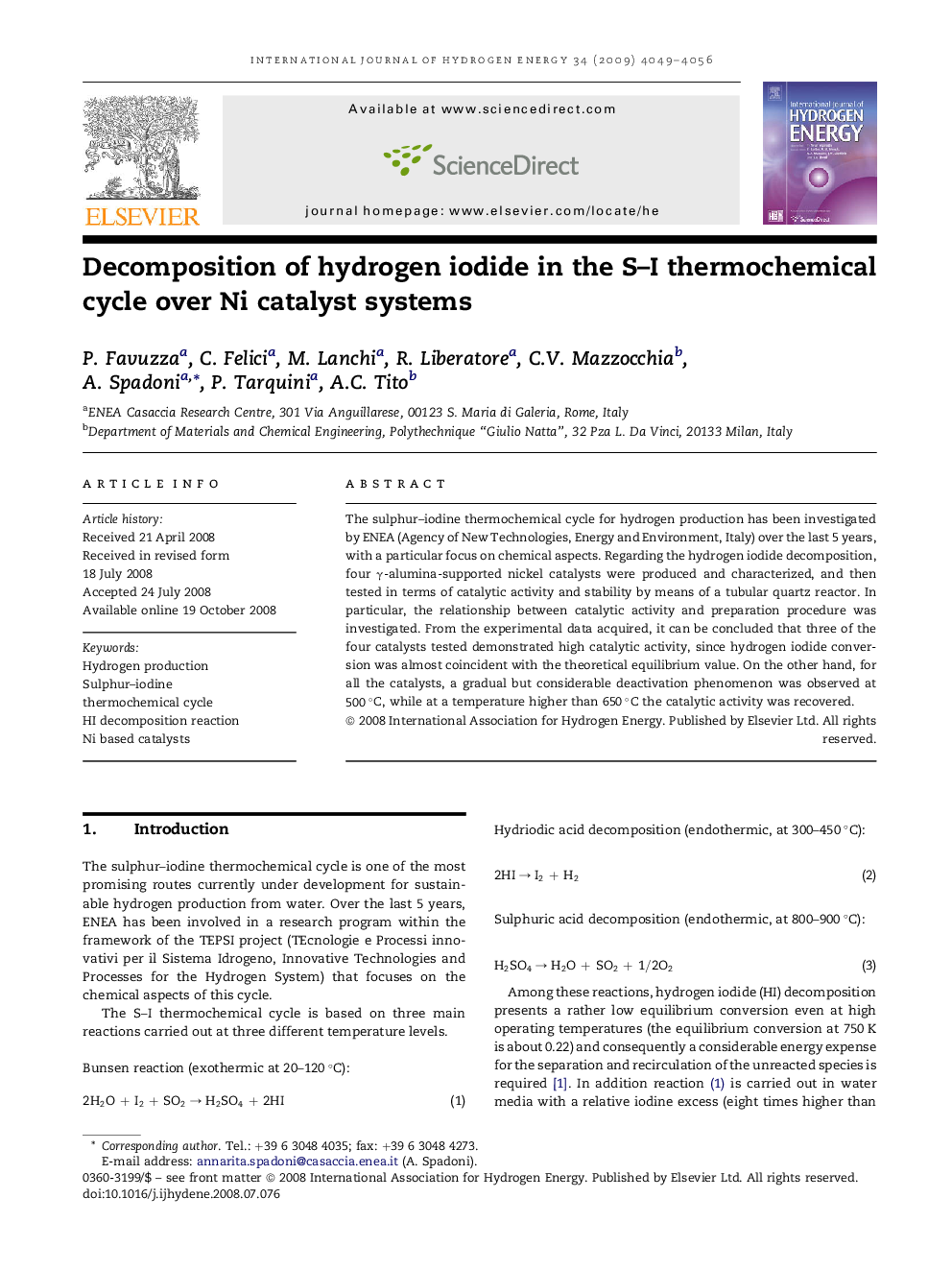| Article ID | Journal | Published Year | Pages | File Type |
|---|---|---|---|---|
| 1279040 | International Journal of Hydrogen Energy | 2009 | 8 Pages |
The sulphur–iodine thermochemical cycle for hydrogen production has been investigated by ENEA (Agency of New Technologies, Energy and Environment, Italy) over the last 5 years, with a particular focus on chemical aspects. Regarding the hydrogen iodide decomposition, four γ-alumina-supported nickel catalysts were produced and characterized, and then tested in terms of catalytic activity and stability by means of a tubular quartz reactor. In particular, the relationship between catalytic activity and preparation procedure was investigated. From the experimental data acquired, it can be concluded that three of the four catalysts tested demonstrated high catalytic activity, since hydrogen iodide conversion was almost coincident with the theoretical equilibrium value. On the other hand, for all the catalysts, a gradual but considerable deactivation phenomenon was observed at 500 °C, while at a temperature higher than 650 °C the catalytic activity was recovered.
